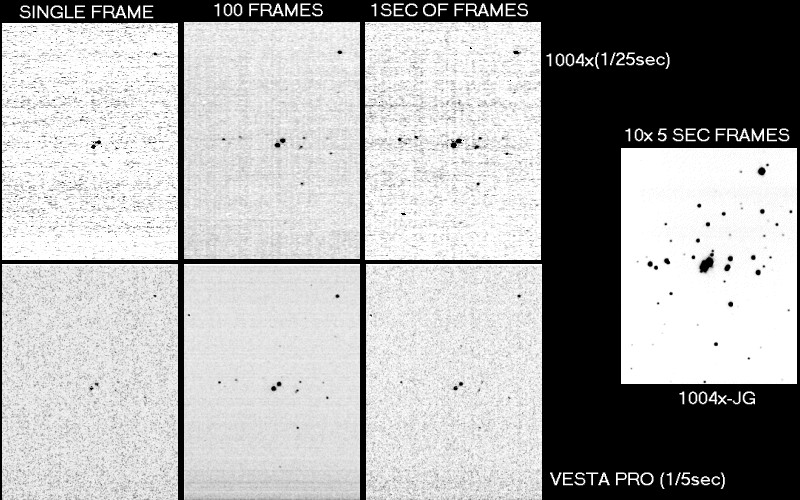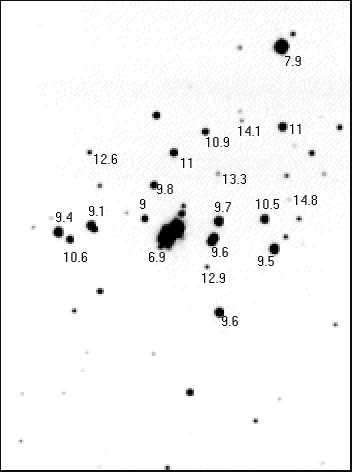
THE RELATIVE SENSITIVITIES OF THE VESTA PRO WEBCAM AND THE 1004x EX VIEW HAD VIDEO CAMERA IN UNMODIFIED FORM
For the same exposure time, the 1004x is several times more sensitive than the Vesta Pro. However, in unmodified form the maximum exposure is 1/25 sec (The video frame rate in the UK) The Vesta maximum exposure is longer at 1/5 sec. It is not obvious therefore which would be the more sensitive.
A comparison was made using the two cameras on the 8 inch scope at f6.3. No IR blocking filter was used. The target was the open cluster NGC 1502, which is a compact cluster with a range of magnitudes from 7 upwards. Conditions were "worst case" with a full moon and thin high cloud. Images a couple of magnitude points deeper would probably be achieved under better conditions. The frames were captured at 320x240 resolution
Three sets of comparison images were made:
1. Individual raw frames
2. Stacks of 100 frames
3. Stacks of frames totaling 1sec in exposure (simulates the amount of integration which might be used in an autoguider application)
Dark frames were used for the 1004x. only (The Vesta images deteriorated when a dark frame was used)
A control image was made of 10 x 5sec using the 1004x and star magnitudes identified using Skymap Pro 7
COMPARISON IMAGES

MAGNITUDES

RESULTS
The two cameras gave similar results for single frames and 100 frame stacks. Faintest magnitudes detected reliably were 8 for the individual frames, improving to 10.5 for the 100 frame stack. (The conclusion is the 5 fold increase in exposure for the Vesta offsets the lower sensitivity)
When comparing the performance at an equal total exposure time of 1 second, the 1004x shows a slight advantage (10 v 9.5)
The 1004x reached mag 14.5 in a 10x 5 second image
The 1004x performance was limited by non random noise artifacts which did not average out in stacking as efficiently as the more random noise of the Vesta.
During the tests, the 1004x video was also viewed on a monitor. It is interesting to note that fainter stars were visible on the monitor compared with the single frame images and the monitor view approximated to that produced in the 1 second total exposure image. This could be due to the persistence of the CRT phosphors and the human eye, which average the noise.
It would be interesting to explore the potential of monitors with long persistence phosphors to improve sensitivity.
16th April 2003